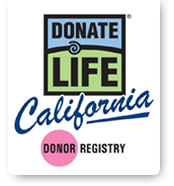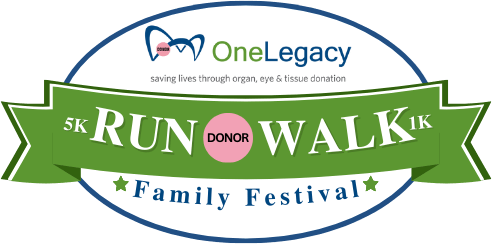61 California Hospitals Recognized Nationally for Organ Donor Registration Campaigns
 SAN DIEGO, Calif., June 26, 2014 – The California Hospital Association (CHA) and Donate Life California congratulate 61 California medical centers, hospitals and health systems for receiving national recognition of their efforts to increase organ donor designations. The organizations were honored as part of the 2014 Workplace Partnership for Life (WPFL) Hospital Campaign sponsored by the U.S. Department of Health and Human Services, Health Resources and Services Administration.
SAN DIEGO, Calif., June 26, 2014 – The California Hospital Association (CHA) and Donate Life California congratulate 61 California medical centers, hospitals and health systems for receiving national recognition of their efforts to increase organ donor designations. The organizations were honored as part of the 2014 Workplace Partnership for Life (WPFL) Hospital Campaign sponsored by the U.S. Department of Health and Human Services, Health Resources and Services Administration.
Hospitals are uniquely positioned to educate patients, visitors, members of the community, and their own staff and caregivers about the life-saving importance of becoming an organ and tissue donor. California’s four organ procurement organizations (OPOs) collaborate with hospitals to provide educational materials on organ, eye and tissue donation and host promotional events such as Donate Life flag-raising ceremonies, media opportunities, donor family events and more.
This year, each OPO enrolled its region’s hospitals in Phase III of the 2014 WPFL Hospital Campaign and tracked their Donate Life activities between June 2013 and May 2014 to accumulate points toward a gold, silver or bronze level recognition. Eight hospitals earned gold medals, 11 earned silver medals and 42 earned bronze. All 61 hospitals were recognized at the Association for Organ Procurement Organizations 2014 Annual Meeting in Baltimore, Md. A full list of recognized California hospitals can be found at http://organdonor.gov/howhelp/recognitionlists_6_25.pdf.
“It is absolutely incredible to see our hospitals’ increasing commitment to educating their employees and communities on the importance of organ, eye and tissue donation,” said Joan Cardellino, director, volunteer services at California Association of Hospitals and Health Systems. “Last year, just one California hospital participated in the WPFL campaign. To have 61 recognized this year is a testament to the successful efforts of California hospitals to create a culture of donation.”
“We couldn’t be happier with the results of the 2014 WPFL Hospital Campaign,” said Charlene Zettel, Donate Life California CEO. “California has the largest waiting list in the country, with nearly 22,000 people in need of life-saving organ transplants. Yet, with about 35 million people in California, only one-third have registered their wishes to become organ and tissue donors. While we have 11 million on our registry, we are not keeping pace with the generous spirit for which California is known. We are confident our partnership with California’s hospitals, CHA and organ and tissue recovery organizations will save lives by inspiring more people to sign up as donors.”
Each day, 79 people in the U.S. receive life-saving organ transplants, and thousands more benefit from cornea and tissue transplants. These extraordinary gifts have been generously donated by people of all ages and backgrounds who took just a few minutes to indicate their decisions to become organ and tissue donors. However, broader awareness of the need for organ, eye and tissue donation is crucial. More than 123,000 people are waiting for an organ transplant nationwide, and each week more than 100 die because no organ is available.
CHA and Donate Life California encourage others to give the gift of life by signing up today to become an organ, eye, and tissue donor at www.donateLIFEcalifornia.org.
Fast Facts about organ, eye and tissue donation:
- In 2013, organ donors in California saved more than 3,000 lives and improved thousands more with eye and tissue donation.
- One organ donor can save as many as eight lives and improve many more through eye and tissue donation.
- Anyone can be a potential donor regardless of age, race or medical history.
About Donate Life California:
The Donate Life California Organ & Tissue Donor Registry is the nonprofit, state-authorized organ, eye and tissue donor registry. As a public service, the registry assures that all personal information is kept confidential and stored in a secure database, accessible only to authorized organ and tissue recovery personnel at the time of an actual donation opportunity. The registry is administered by Donate Life California and California’s four nonprofit, federally designated organ recovery organizations: Donor Network West (formerly CTDN), Lifesharing, OneLegacy and Sierra Donor Services. For more information about Donate Life California; how organ, eye and tissue donation saves and improves lives; and to sign up, please visit www.donateLIFEcalifornia.org or in Spanish at www.doneVIDAcalifornia.org.
Please visit Donate Life California’s Stories of Hope web page to read inspiring stories about organ and tissue donors and recipients from around the state.
Contacts:
Jan Emerson-Shea, Vice President, External Affairs, CHA, 916-443-7401
Brianne Mundy, Program Manager, Donate Life California, 619-563-5137
High concentration of Azithromycin in infected tissues is also caused by the fact that phagocytes and macrophages transport it to the site of infection and release in the area of inflammation. Azithromycin is prescribed in case of illness or injury at the time.








